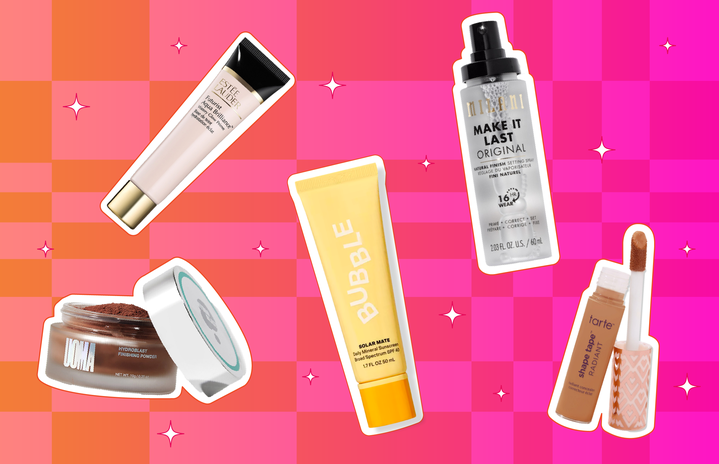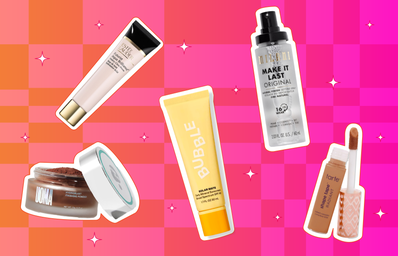**Trigger Warning: Mentions of Eating Disorders and Body Dysmorphia**
It’s no surprise that social media and celebrity influence seem to shape what we consider “pretty” and not. Apps like TikTok are taking social media culture by storm with aesthetics, beauty hacks, and constant flips in what is considered “in” and “out” regarding our appearances. The Kardashians are removing their BBLs, Alix Earle can triple any brand’s sales with a single post, and TikTok shop is quickly becoming the new Amazon. Pop culture is changing at a rapid rate and our ideal aesthetics are changing with it. However, there is a growing trend that has caught the attention of the majority of users: the natural, clean, vanilla-girl aesthetic.
This new focus is tossing 2016 trends of curvy bodies and glam makeup to the side and praising a new idea of a sleek, minimal, and all-natural look. The praise of this new emphasized aesthetic seems to be presenting itself as the adoration of natural beauty itself and is being represented in more ways than just 30-second videos, but also through beauty companies’ new commitments to tinted moisturizers and media that seem to focus on the reality of femininity (shoutout Greta Gerwig’s Barbie, you’ve done nothing wrong). However, while accessing this new-found praise for simplistic beauty and feminine culture, I am willing to admit that I find these new ideals more harmful than any of the stereotypes we’ve been expected to fit before. How can one be “pretty” when natural beauty is confined to a specific, exclusionary aesthetic? Let’s talk about it.
Makeup and Fashion: What does the “It-Girl” Entail?
I feel like the most common argument I’ve seen when explaining this phenomenon is that the use of minimalistic makeup and fashion is supposed to support women in celebrating their natural beauty, and don’t get me wrong I am all for this idea. Of course, I would love to live in a world where we could all celebrate the realism of female identity, one where we can celebrate each other’s skin and bodies and be recognized for the natural beauty we bring to the table. But that’s the issue with natural beauty that social media fails to recognize, there is only one specific type of “natural” beauty being represented, and to no one’s surprise, it’s young, dainty, and Euro-centric.
When thinking about the qualifications to become one of these new it-girls a specific range of expectations and life hacks come to mind. A social media platform that had spent months encouraging women to become comfortable with weight-lifting and getting stronger has now shifted its focus to month-long pilates challenges that can guarantee a petite frame in no time. Makeup has been slowly transformed from an art form and a process of self-expression to a silent competition of how to subtly manipulate your features until they look on trend: contouring a button nose, a perfectly smooth skin tone, and creating a doe-eyed effect because your natural eye shape is soooo out of style. I’m not saying makeup can’t be used as a tool to emphasize one’s given features and has to be crazy and bold at all times, but when we alter our features to replicate what we consider to be “naturally pretty” can it be considered natural?
Even in the sense of fashion, the female body is starting to become more of an accessory than any hat or belt could provide. Whether we are comfortable admitting it or not, body types are one of the most common things to come in and out of trend, and right now there is a huge emphasis on being as thin as you can be. Celebrities like the Kardashians have cosmetically traded in their curvy bodies for thin, Bella Hadid’s ultra-small frame is being used as a fashion statement on it’s own (think of her Coperni Paris Fashion Week spray painted dress), and headlines are reporting the return of heroine chic. Whether you have unfortunately stumbled around TikTok what I eat in the days that include meals fit for a toddler or have also felt personally targeted by the emergence of low rise jeans, there is no way to fully deny the recent glorification of being thin. Unrealistic body standards have always been an aspect of our culture and that unfortunately hasn’t seemed to change, but this new skinny-obsession is seeming to diminish the previous trends of body positivity and an adoration for the curvy body. By now making fashion mainly accessible to a specific type of body there is a promotion of the idea that one must change their body to fit their clothes, not vice versa. We’ll touch more on the dangers of this later.
Being Comfortable in Your Skin (…Or Not)
Skincare has also been seen following in the footsteps of its cosmetic counterparts. In encouraging women to ditch their heavy coverage foundation and primers, the expectation is that their skin should look exactly what it would if they had these on previously, just dewy and cake-free. We would love to see your natural beauty shine through as long as it’s free of pimples, scarring, or wrinkles. If you DO have these things, here is a 10-step skincare routine for you to follow (and don’t worry, we’ll try to make sure each of these products is under $60 because let’s be real… drugstore ‘doesn’t work’). Despite the fact that for some people these regimes demand an exceptional amount of time, money, and energy there seems to be a new emphasis on the idea that if you don‘t follow this sort of routine, you’re simply not clean enough.
Maybe I’m a bit of a hypocrite for writing this as I am someone who follows a multiple-step daily regimen and the products I use are on the higher end, however, I also recognize that this is in and of itself a privilege. I’m not saying I’m against people taking care of their skin, I’m actually very glad that we’re being encouraged to use less harsh products and to take care of our skin. However, it’s also important to think and recognize where this encouragement is coming from. Are we being sold on this baby-soft skin ideology because it’s “good for us”? Probably not, and even if it was, for most people this is pretty unattainable. But once again we have created and encouraged another beauty staple that completely isolates large groups of people, whether it be those with skin struggles as basic as hormonal acne or aging women because these days it seems that letting yourself develop wrinkles is about as bad as committing a crime (don’t even get me started on those wrinkle prevention straws on TikTok…UGH). How can I feel beautiful when I can’t obtain this, does this mean I’m just naturally unattractive? Do I deserve to feel uglier when my skin isn’t doing its best? Is it really such a crime to allow myself to get a wrinkle or have dry skin? Whatever… I guess I’ll go for botox instead.
So… What are the effects of this? HOw can we handle it?
Now you may be thinking “Is this all really THAT deep?”. This isn’t the first time we’ve seen trends such as these emerge and it certainty won’t be the last so why does it matter now? Instead of preaching to you why I think recognizing how toxic these beauty mindsets may be, I figured it might be better to look at the facts instead. One of the ways this societal pressure to be more “naturally beautiful” has showcased itself is through the rapid increase of plastic surgery rates, and what surgeries seem to be gaining the most traction.
According to the American Society of Plastic Surgeons 2022 Plastic Surgery Statistic’s Report, there has been a noticeable 8% increase in facelift procedures over the last year… can you guess why? If you thought to reverse signs of aging, congratulations! You hit the nail on the head. It doesn’t end here though, as the ASSPS reports between 2019-2022 there has been a 54% percent increase is aesthetic breast reductions, a 86% increase in butt lifts, a 23% increase in liposuction, and a 36% increase in abdominoplasty (the reshaping of ones stomach), and this is only taking into account invasive plastic surgeries. For non-invasive there has been a 73% increase in neuromodulator injection’s (botox), an unprecedented rise in lip fillers, and a 70% rise in HA fillers. I know I just threw a lot of numbers at you, but I feel like there is no better way to get these point’s across than this rapid increase in cosmetic surgery: we are being taught that the way we look on our own is not enough. No argument there.
Lip augmentation with fillers secured a spot in its entry year … Much of its rise can be credited to social media, with influencers on platforms like Instagram and TikTok amplifying its appeal through
American Society of Plastic Surgeons
short-form videos dedicated to the procedure”
Other statistic’s that should probably worry us are those regarding the increase and correlations between social media usage and eating disorders. I’m not going to get too into this because I know how triggering it may be for some, but heres the basics: the University of Central London researched 50 reports and statistics regarding eating disorders and have found that the correlation between social media and the rise of eating disorders in those ages 10-24 are no coincidence, and state “Young females with a high BMI and existing body image concerns are at highest risk of being affected by the content they see online”. Essentially, people are heavily affected by what we see online whether we like it or not, and it’s significantly more likely to affect those who don’t fit into this new trendy body type. And with this new idolization of skinny, clean, naturally glowing girls, it would be naive of us to shy away from these potential effect’s that this cultural phenomenon of aesthetic’s may have on our mental health.
At the end of the day, the best thing we can do is just to pay attention and to not place worth into this world of expectations. Despite me fighting against these trends this whole article (..sorry), I have to admit that I love to have a good skincare routine, to wear my hair in a sleek ponytail, pilates after a long day, to do my makeup glossy and natural, and a good pair of low rise jeans. The issue isn’t the trend itself, but instead the value we place into it. Whether we want to recognize it or not we react to what is presented to us.
We want the things we are told are beautiful and cool and trendy even if we desperately proclaim we don’t care. Instead of making certain appearances and trends the end all be all of how we dress and think about ourselves, we must find the middle ground; embracing these trends where they fit us and comfortably being able to put behind us the parts that don’t. To not judge other women for not being able to fit into our ideal “natural” and encouraging them to embrace their own. We’ll never be able to stop this rise of aesthetics, but we can call them out where it seems best fit. Pay attention, take care of yourself, and know that your natural beauty has and will always be more than enough.


